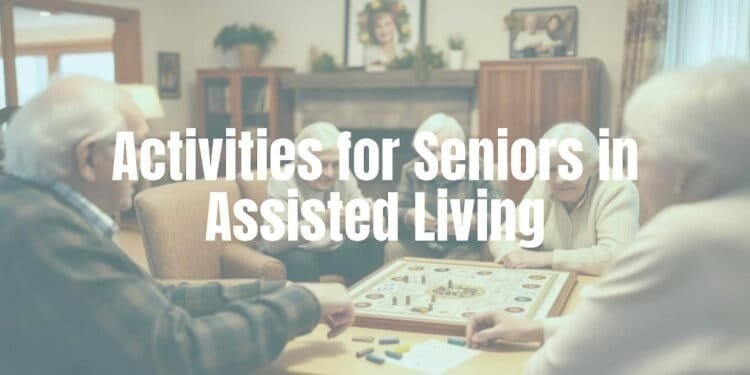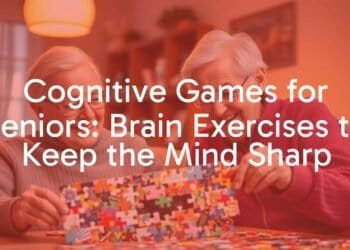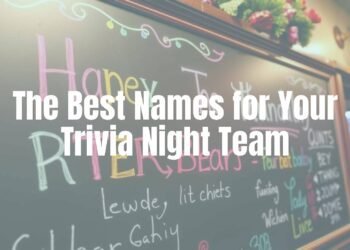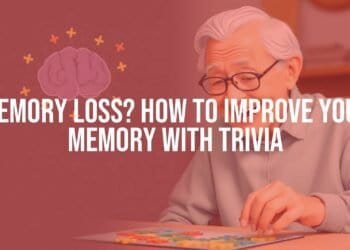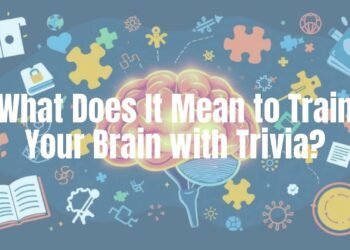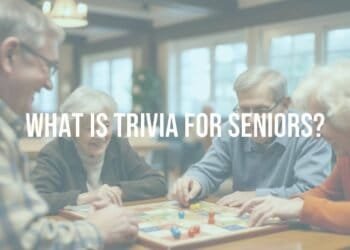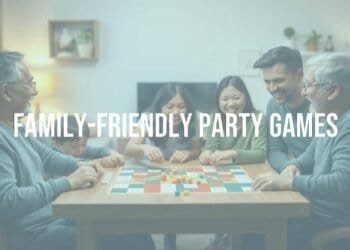In assisted living communities, an engaging activity program is far more than a way to pass time; it is a cornerstone of a full, healthy, and happy life for senior residents. These programs are carefully planned to fit many interests and abilities, so every person has chances to explore, learn, connect, and thrive. From boosting physical health and thinking skills to building social ties and a sense of purpose, a well-rounded activity schedule greatly improves overall well-being and quality of life for seniors in these communities.
The best assisted living communities know that people of all ages want to explore, have fun, learn, and live fully. That’s why their activity offerings go far beyond bingo or checkers, with many options that spark the mind, body, and spirit. This full approach respects each person’s abilities and interests, working to offer a rich mix of experiences that keep seniors active and prevent boredom.
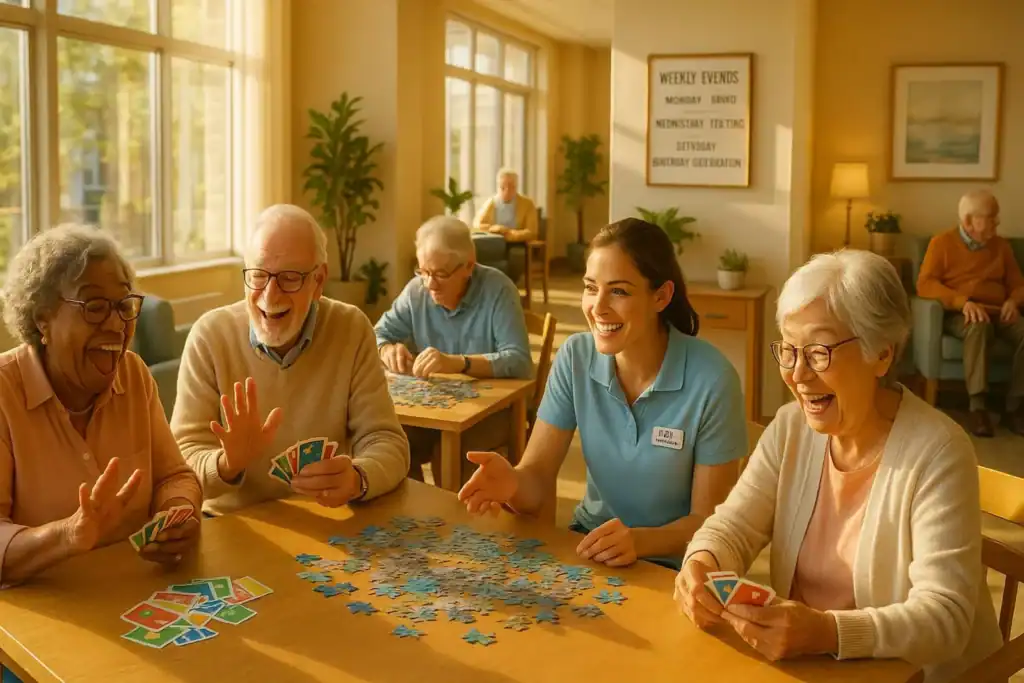
Why Activities Are Important for Seniors in Assisted Living
Activities in assisted living communities are more than recreation; they are key parts of whole-person senior care. They support residents’ physical, emotional, and cognitive health. A thoughtful activity program is one of the best ways to improve daily life, helping residents feel valued, involved, and content.
These programs do many jobs at once: they support physical health and mental sharpness, help people connect socially, and give a sense of purpose. By offering a lively and supportive setting, assisted living communities help seniors live more active, bright lives, which can delay age-related decline and boost happiness.
Benefits for Physical, Emotional, and Cognitive Health
The benefits of engaging activities for seniors touch many parts of health. Physically, regular activities can improve heart health, muscle strength, and balance, which are key for lowering fall risk and other age-related issues. Exercise, from gentle yoga to walking clubs, can reduce depression, lower blood pressure, and improve sleep. Also, physical activity increases blood flow to the brain, which can improve thinking skills a lot.
For the mind, mentally stimulating activities are very important. Puzzles, trivia, talks, and learning new skills can help maintain thinking ability, lower the risk of dementia, and improve memory. These brain workouts help keep the mind sharp and push back memory loss. Emotionally, matching activities with residents’ interests and passions brings purpose and joy, fights boredom, and raises overall well-being. The joy, laughter, and pride from doing enjoyable activities can greatly lift quality of life.
| Health area | Examples and effects |
|---|---|
| Physical | Chair yoga, walking clubs, light aerobics; better balance, strength, sleep, and mood |
| Cognitive | Trivia, puzzles, classes; sharper memory, focus, and problem-solving |
| Emotional | Music, art, social groups; less loneliness, more joy and purpose |
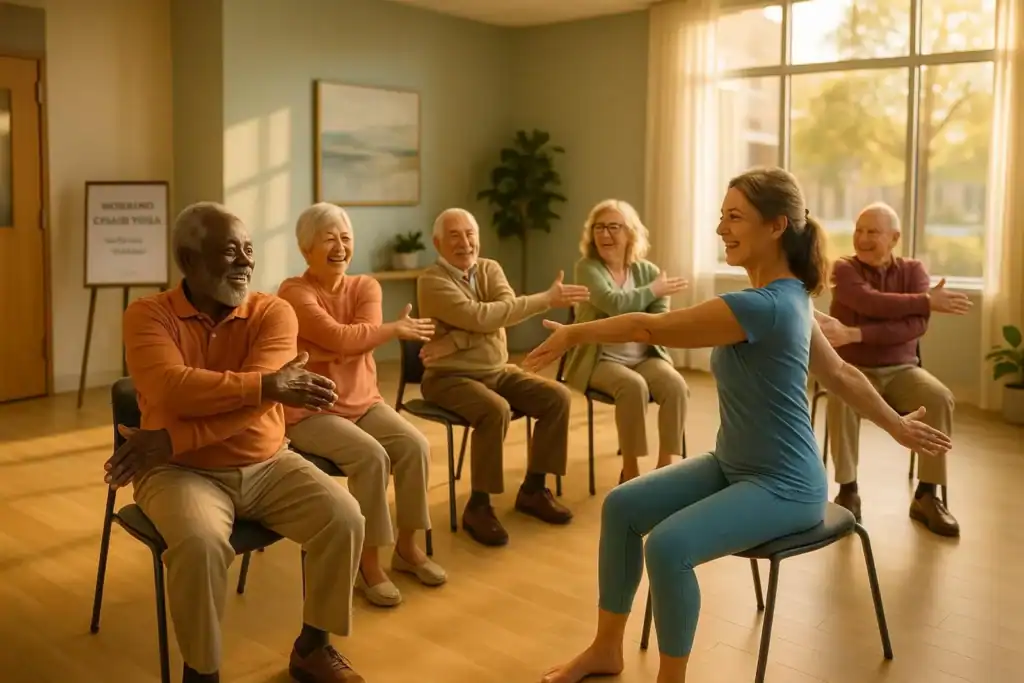
How Activities Reduce Loneliness and Social Isolation
Loneliness and isolation are common concerns for seniors, and activities play a key role in reducing them. Group activities spark conversation, fight loneliness, and create chances to build real friendships. These shared moments build a sense of community and belonging, creating a caring place where residents feel connected and understood.
Effective “get to know you” and team-building activities are key for building community. They help residents meet others, learn how the community works, and feel safe and included. Shared interests formed through activities also build understanding and can lower the chance of conflict among residents. By giving a steady way to connect, activities make sure residents have many chances to engage with peers, staff, and people from outside the community.
Role in Improving Quality of Life
The goal of a strong activity program is to improve overall quality of life. This goes beyond physical and mental health to include dignity, independence, and personal fulfillment. Activities that support self-care and independence help residents keep their dignity and make choices that matter to them.
When residents have a varied schedule of engaging activities, they gain a stronger sense of purpose and happiness, which links to longer life. An active lifestyle with many enjoyable pursuits changes assisted living from a place of passive care into a lively community where seniors keep exploring, learning, and growing.
How to Select Activities That Meet Senior Residents’ Needs
Picking the right activities for seniors in assisted living is a careful process that calls for close attention to individual needs, likes, and abilities. The goal is a program that is both inclusive and inspiring, so every resident finds something that fits. This approach moves past a one-size-fits-all model and truly personalizes the assisted living experience.
The success of an activity program depends on its ability to adapt and change with resident needs and interests. This active, resident-centered planning turns a simple schedule into a real source of joy and engagement.
Customizing Activities for Physical and Cognitive Abilities
A key part of activity selection is access for people with different mobility and cognitive levels. Offer a range of physical options, from gentle yoga or seated dance for limited mobility to more active exercise for others. For thinking skills, adjust activities to different abilities, with simpler games or puzzles for people with dementia and more complex challenges for others.
Provide helpful tools like hearing devices or magnifiers so residents can take part fully. Also, build personal activity plans that fit each person’s strengths and limits. Staff training is also key, so staff can spot and adapt to different abilities and give the right support and encouragement.
Accommodating Individual Interests and Preferences
To truly engage residents, activities should match their interests and passions. Use an active approach to learn what people enjoy. Regular surveys, focus groups, and resident committees are great ways to gather feedback and make sure resident voices guide planning. Plan options across many interests, from gardening and tech to cooking and music.
Also rotate activities to keep things fresh and prevent boredom. For residents who like quiet time, offer reading nooks or art supplies for solo projects. By highlighting resident talents, like showing an artist’s work or a cook’s skills, communities can lift pride and a sense of contribution.

Planning for Health and Safety Requirements
Resident health and safety come first when planning and running any activity. Have enough staff or volunteers to help and respond in emergencies. Use safety steps like non-slip mats for fitness, water for outdoor trips, and handy first-aid kits. These are a must.
- Set clear emergency steps and train all staff well.
- Do regular health checks to see who can join certain activities.
- Line up activity times with medication schedules.
- Do risk checks for all activities and reduce hazards.
- Keep shared equipment clean and sanitized.
- Make rooms comfortable: good seating, temperature, and lighting.
- Brief residents on safety before activities start.
Offering Cultural, Religious, and Seasonal Options
Being inclusive means reflecting the many cultural and religious backgrounds of residents. Offer activities that celebrate different holidays, provide religious or spiritual services, and serve meals from various cultures. Add educational sessions about different traditions to build understanding and respect among residents.
Seasonal activities also bring variety and a festive feel, like Christmas card making or Halloween trick-or-treating. Planning around seasons and holidays breaks routine and adds excitement, making the community feel lively and in tune with the year.
Encouraging Family Involvement and Community Partnerships
Family involvement plays a key role in residents’ well-being. Plan events that welcome family, such as game nights, picnics, and holiday celebrations. Keep families informed with schedules and invite them to volunteer or help with activities to strengthen bonds.
Working with local groups, therapists, entertainers, and other resources can greatly improve activity quality and variety. This can include local artists, music therapists, pet therapy groups, or businesses for cooking classes. Using libraries, museums, and senior centers expands the options and brings fresh ideas into the community.
Types of Activities for Seniors in Assisted Living
Assisted living communities today offer a wide range of activities, far beyond endless bingo. The goal is a whole-person program that supports social life, curiosity, movement, and joy. This mix helps every resident, no matter their background or ability, find meaningful ways to spend time.
By grouping activities into clear types, communities can build a balanced, full set that meets many needs. This structure helps with planning and makes the experience richer for everyone.
Social Activities and Group Engagement
Social interaction supports healthy aging, and assisted living communities create many chances to connect. Group events like community gatherings, themed dinners, and birthday parties build a strong sense of belonging. Icebreakers help new residents settle in and make friends, while clubs based on shared interests, like knitting or chess, offer ongoing engagement.
Team games such as trivia nights or board game sessions build camaraderie. Many communities also add intergenerational activities by inviting schools or youth groups, and offer volunteer or mentoring roles that add purpose. A buddy system can help new residents adjust smoothly.
Physical and Wellness Programs
Staying active is key for seniors, and programs offer options for many fitness levels. Classes like chair yoga, light aerobics, stretching, and balance work help maintain mobility, balance, and strength. Walking clubs around the grounds or in local parks add gentle exercise and fresh air. Dance sessions, including seated dance, rhythmic movement, or senior-friendly Zumba, are a fun way to stay active and socialize.
For those who can, swimming is a great low-impact, full-body exercise. Many communities also include mindfulness practices such as Tai Chi and meditation, which support both body and mind.
Creative Expression and Artistic Projects
Art is a helpful way to relax, feel joy, and express yourself at any age. Communities offer painting, knitting, pottery, scrapbooking, and jewelry making workshops. These activities foster creativity and also support fine motor skills and cognitive stimulation. Music therapy, sing-alongs, instrument lessons, drumming circles, and songwriting engage residents emotionally and mentally. Crafting projects like collages or pressed flower art give focused engagement and a sense of accomplishment.
For those who enjoy performing, reader’s theater, improv games, or small-stage productions offer a space for dramatic expression.
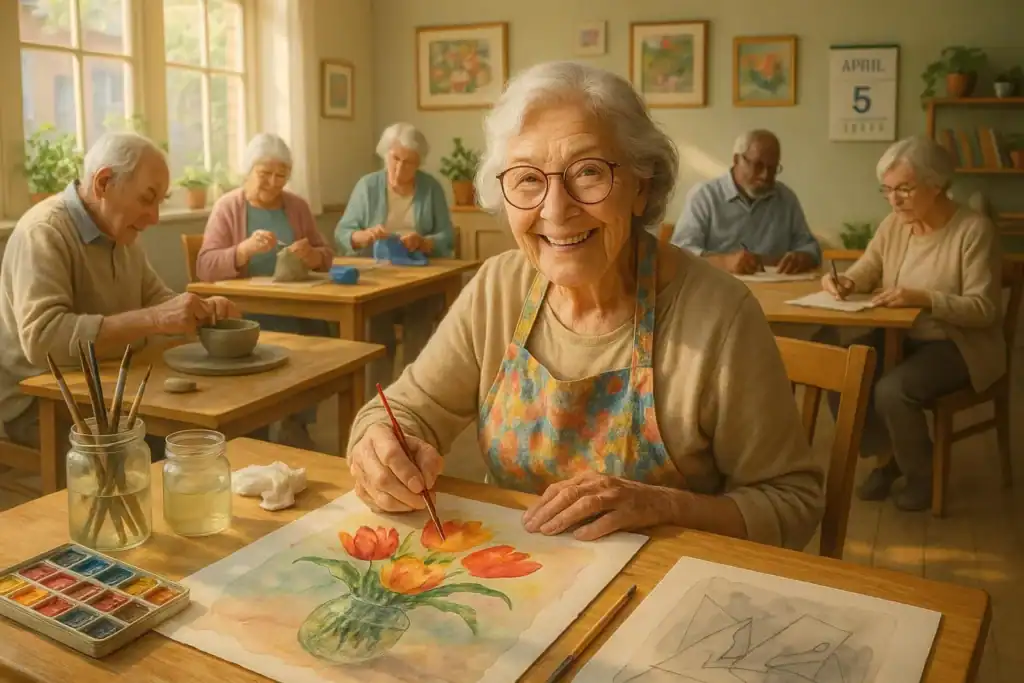
Intellectual and Educational Opportunities
Keeping the mind sharp matters, and communities offer many ways to learn. These include guest speakers, history talks, and tech classes that show residents how to use tablets or smartphones for video calls, research, or memory games. Brain games and puzzles like Sudoku, crosswords, and strategy games support thinking skills. Language classes, book talks, and poetry groups serve literary interests.
Debates and discussions on current events, philosophy, or science spark critical thinking and lively conversation. Many communities host presentations and workshops on various topics to keep learning active.
Therapeutic and Sensory-Based Activities
Therapeutic activities can help residents with health needs or memory challenges. Music therapy, pet therapy, and art therapy are common because they are calming and uplifting. Sensory options like gardening, aromatherapy, or sensory rooms with gentle lights and sounds engage different senses and can help people with dementia focus and take part.
Reminiscence therapy and storytelling games also support memory by helping residents share life experiences and keep special memories.
Technology-Based and Intergenerational Activities
As tech becomes more common, technology-based activities are now a regular part of life. Computer classes and virtual reality experiences spark curiosity and learning, while social media tutorials help residents connect with family and friends online. Tech also supports intergenerational activities, like high school IT classes teaching seniors, or video calls with grandchildren.
These activities bring generations together, offer new ways to explore (like virtual museum tours), and keep seniors connected to the wider world.
Volunteer and Purpose-Driven Activities
Many seniors enjoy having purpose and giving back. Assisted living communities offer volunteer and purpose-driven options, such as making blankets for shelters, joining charity events, or running food and clothing drives. Mentorship programs let residents share skills with students or local groups, creating a valuable two-way exchange.
These activities build confidence, increase self-esteem, and give residents meaningful ways to stay involved and make a positive impact.
Examples of Engaging Activities for Assisted Living Residents
The strength of a well-rounded assisted living program is its variety. These examples show the range of activities that keep residents engaged, stimulate their minds, get them moving, and lift their spirits. They show how communities go beyond the basics to build rich, welcoming environments.
From quiet reflection to lively group time, these activities support a vibrant and fulfilling lifestyle for seniors and prove that assisted living can offer new experiences and steady growth.
Games and Puzzles for Cognitive Stimulation
Games and puzzles are great for keeping minds sharp. Beyond classic bingo, many communities offer trivia nights (often themed by decade), board games (from luck-based titles to strategy games like Monopoly), and card games such as bridge, canasta, or rummy. Puzzle books with crosswords, Sudoku, and word searches work well for individuals or small groups. Jigsaw puzzles provide strong mental stimulation and a sense of achievement. Motion-based video game systems, like Nintendo Wii, add light physical play with bowling, tennis, and golf, mixing movement and thinking in a fun way.
Music, Singing, and Dance Sessions
Music strongly affects mood and memory. Communities often host music lessons, sing-alongs, and karaoke, giving residents a chance to express themselves. Visits from local musicians or choirs bring joy and entertainment. Dance sessions-ballroom, line dancing, swing, or senior-friendly Zumba-offer a fun way to stay active, improve coordination, and socialize. Music therapy is more common in memory care because it can calm, stimulate, and bring back pleasant memories.
Art and Craft Workshops
Creative expression is an important part of well-being. Art and craft workshops include watercolor painting (often outdoors), knitting, crocheting, pottery, scrapbooking, and jewelry making. These activities build fine motor skills, focus, and a sense of progress. Seasonal crafts like Christmas card making or art with pressed flowers add timely, fun touches. Abstract crafts like collages are great for those with fine motor challenges because they allow creativity without pressure.
Fitness Classes: Yoga, Tai Chi, and Walking Clubs
Physical activity is key for health and independence. Assisted living communities offer fitness classes that fit seniors, such as gentle yoga, chair yoga, stretching, and balance exercises. Tai Chi is well known for helping with balance and flexibility. Walking clubs invite residents to enjoy the outdoors on the grounds or in parks, which supports heart health and social time. Water weight training or pool aerobics provide low-impact options that are easy on joints.
Outdoor Excursions and Nature Walks
Time in nature supports overall well-being. Communities plan outings to local attractions, parks, botanical gardens, or scenic car rides to enjoy the seasons. Nature walks engage the senses and offer gentle movement. Picnics on-site or at parks bring a welcome change of scenery and a chance to eat outdoors. Patio gardening clubs with container or vertical planters let residents grow plants and enjoy the calming benefits of gardening, even with limited mobility.
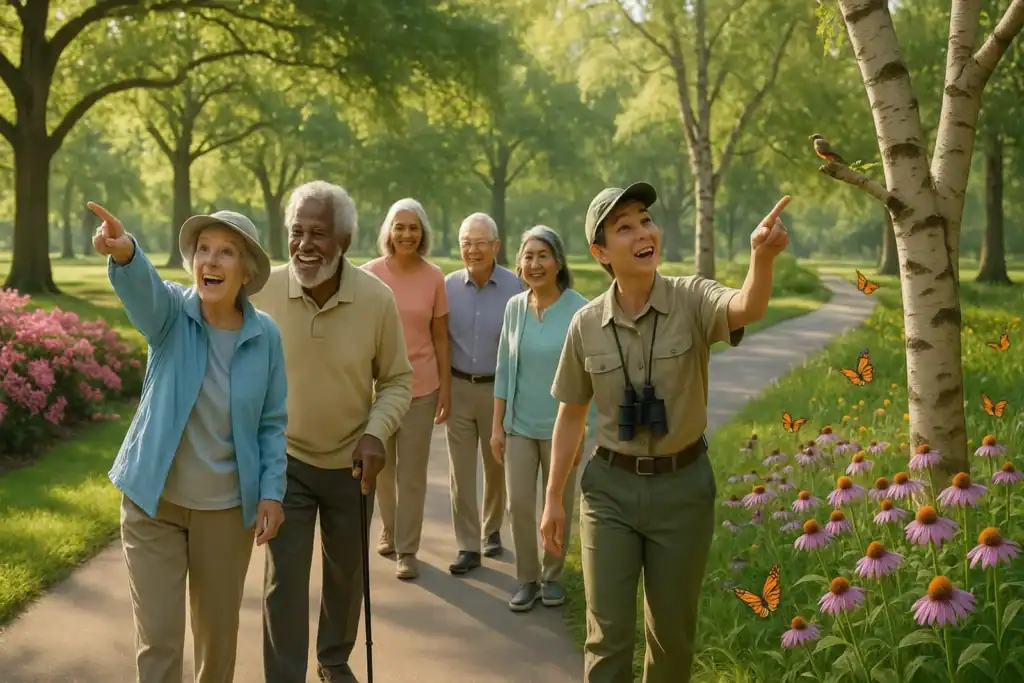
Book Clubs and Reading Groups
Book clubs and reading groups offer mental stimulation and social connection. Residents can discuss books and poetry or join creative writing workshops. For those with vision limits, audiobooks allow full participation. These groups build lively conversation, shared learning, and a deeper love for stories and ideas.
Movie Nights and Live Entertainment
Entertainment is a staple in assisted living. Movie nights, often with classic films or themes, give a relaxing group activity. Many communities also host live shows with musicians, comedians, or small theater groups. Special screenings of big events like sports finals or debates bring residents together and spark conversation.
Seasonal and Holiday Events
Seasonal and holiday events bring joy all year. From Christmas card making and Halloween trick-or-treating to themed parties, these events create chances to celebrate and connect. Special themes like “Hawaiian Day” or “beach day” add fun variety and break routine. These celebrations often include family, which strengthens ties across generations.
Cooking, Baking, and Nutrition Programs
Food-focused activities are often popular. Cooking classes-like “Cuisine of the Month” with global recipes-or sessions with local chefs involve residents in making and enjoying meals. Baking contests or simple baking sessions add creativity and tasty results. Trips to farmers’ markets for fresh produce can be part of a nutrition program, promoting healthy eating and links to local resources.
Community Service and Volunteering
Many seniors find real satisfaction in helping others. Community service projects like making blankets for shelters, joining charity events, or running food and clothing drives give residents a sense of purpose. Volunteer roles inside the community or with outside groups let residents use their skills to help, building a strong sense of value and connection.
Tips for Boosting Engagement in Assisted Living Activities
Keeping engagement high in assisted living takes creativity, flexibility, and a clear understanding of resident needs. The goal is to build a place where taking part feels empowering and fun, not forced. The ways you encourage engagement are as important as the activities themselves.
By focusing on consistency, choice, and flexibility, communities can build a dynamic program that truly improves residents’ lives and keeps them active, interested, and connected.
Building a Regular Schedule with Variety
A steady schedule gives structure and helps residents know what’s ahead. But routine alone can get dull. Balance consistency with variety by adding new and different activities often. Plan around seasons and holidays to add a festive feel and break routine.
- Offer short (15-30 minutes) and longer (1-2 hours) options for different energy levels.
- Schedule activities at different times of day to fit varied routines.
- Work with nearby communities for joint events to add fresh social options.
Promoting Resident Choice and Participation
Giving residents a voice in planning raises engagement. Use regular surveys and resident committees so activities fit real interests. Invite residents to lead sessions, like music lessons or hobby demos, to build leadership and peer connections.
Offer both group and solo options to respect personal preference. Add drop-in activities that do not need sign-ups to welcome spontaneous participation, which can feel less scary for some residents. When people feel heard and have choices, they are more likely to take part.
Adapting Activities to Changing Needs Over Time
Resident needs can change, so a good program stays flexible. Keep checking physical and cognitive abilities and change activities to match. For example, offer shorter, slower walking routes for some and longer paths for others. Adjust game difficulty to match memory and thinking speed.
Collect feedback often and be open to changing the schedule based on what you hear. Try new activities on a trial to see interest before adding them for good. Ongoing review keeps the program relevant, engaging, and helpful for everyone as needs change.
Frequently Asked Questions about Activities for Seniors in Assisted Living
Learning about assisted living activities often brings up common questions, especially for family members or those planning a move. These answers offer clear help and show how communities handle specific needs and build a positive experience for all residents.
Knowing these points can bring peace of mind and highlight the full care approach built into well-planned activity programs.
What Are the Safest Activities for Residents with Mobility Issues?
For residents with mobility limits, safety is the most important factor, but there are many good options. Chair yoga, seated dance, and light stretching help with flexibility and strength without needing to stand. Water aerobics in shallow pools offer a low-impact, full-body workout because the water supports the body and eases joint strain.
Cognitive activities like trivia, card games, board games, and puzzles can be enjoyed while seated. Creative options such as painting, knitting, scrapbooking, and writing workshops are well suited too. Outdoor time can be made accessible with paved trails, scenic car rides, or container gardening for seated work. The key is thoughtful adaptation, enough supervision, and the right assistive tools.
How Can Assisted Living Facilities Involve Families and Guests?
Assisted living communities welcome family and guests because they play a key role in resident well-being. Many host events for family participation, such as holiday parties, family game nights, picnics, and themed gatherings. They share schedules through newsletters, websites, or apps so families can plan visits around engaging events.
Communities also invite family members to volunteer or help with activities to build stronger bonds. Intergenerational programs with grandchildren and other young relatives are popular and create lasting memories. Open houses let families see daily life and activities firsthand. The goal is to bring families into daily community life so they feel welcome and involved.
Should Residents with Dementia or Memory Loss Participate in Group Activities?
Yes, residents with dementia or memory loss can take part in group activities, and doing so can greatly improve quality of life. Activities are adapted to their abilities and focus on engagement, sensory input, and emotional connection rather than complex rules. Simple games, sing-alongs, music therapy, art therapy, and reminiscence sessions are very helpful.
Group settings offer helpful social interaction, reduce isolation, and support a sense of belonging. Familiar routines and gentle structure can comfort residents and support memory and thinking in a safe setting. Staff are trained to help people take part, keep safety in focus, and adjust activities as needed so everyone has meaningful chances to connect.

